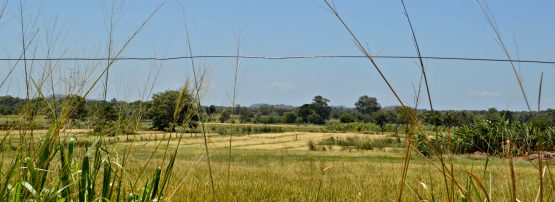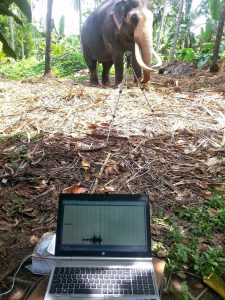
Human-elephant conflict is a very serious and destructive problem in rural Sri Lanka.
Each year, around 70 people are killed by elephants who wander into villages and farms in search of food; and nearly four times as many elephants are killed as a result. Elephants wandering into farmland also damage crops.
Presenting at the Internet of Things (IoT) tutorial at the recent APNIC 42 conference held in Colombo Sri Lanka, Dr Kasun de Zoysa from the University of Colombo’s School of Computing, shared with attendees examples of how his team, in collaboration with Sweden’s Uppsala University, are employing simple IoT solutions to protect crops and both human and elephant lives.
“Different people have approached this problem in different ways: biologists and animal conservationists are trying their best to protect local habitats, and the government and villagers have built kilometres of electric fencing around their villages and farms,” says Kasun.
“Our approach seeks to complement these efforts by incorporating sensing and data processing technology.”
Such technologies include making electric fences smarter and improving elephant warning systems.
Smarter electric fences
Electric fencing is a common solution used to protect villagers from elephants, particularly farmlands bordering the jungle.
However, Kasun says elephants have learnt how to avoid electric fences and discovered ways to break them, making the practice less reliable.
Once broken, it takes a significant human effort to find the location of the breakage by walking along the fence wire several kilometers long under the threat of nearby wild elephants.
To overcome this, Kasun’s team have developed a cost-effective electric fence, with small IoT nodes placed along the wire that can communicate with each other using the same wire as the communication medium.
“Their packets are encoded into the high-voltage electric pulses in a way that enables us to identify which node is disconnected from the network,” says Kasun. “When a node is disconnected from the network (part of the fence is broken) we can send alerts to maintenance crews with the exact location of the breakage.”
Infrasonic elephant localization system
Kasun says that although this new system will help with alerting villagers to potential elephant intrusions, it is not by itself a sustainable solution to protect people’s lives.
“This is where our second approach comes in,” says Kasun. “We have been testing an infrasonic localization system to locate elephants.”
“Elephants emit infrasonic (low frequency sounds) which travel further compared to audible frequencies. The system we are working on can accurately locate elephants in the area and alert people via various means including SMS alerts and social media.”
Kasun says that both the infrasonic elephant localization system and the smart electric fence are still in experimental stages; however, they plan to launch a pilot program in the coming months to evaluate their effectiveness.
“Success of this pilot deployment will provide us with the valuable information we need to complete this work and produce a cost-effective, open-source product that anybody can build.”
Read more about Kasun’s team’s preliminary work with infrasonic elephant localization systems.
Asanka Sayakkara is an Assistant Lecturer at University of Colombo School of Computing.
The views expressed by the authors of this blog are their own and do not necessarily reflect the views of APNIC. Please note a Code of Conduct applies to this blog.


Same problem in Bhutan too. Will it be posdible to try it here as well if at all possible for you.
Hi Yeshey,
Of course , why not? The methods we explore can be applied in other countries too. Most importantly we are considering Asian elephants.
Firstly, best wishes to make your trial a success. I am willing to share my ideas with you and pl. contact me.
It is good to know you are finding ways to minimize the possible conflicts of humans with animals, but lets work also on the origins of those situations, if elephants have had travel routes and new obstacles, farms and fences are installed, they have also the right to cross using well designed paths.
Regarding the “Infrasonic elephant localization system” take into account that this technology could be used by hunters to locate the animals. I recommend to read: http://e360.yale.edu/features/unnatural-surveillance-how-online-data-is-putting-species-at-risk